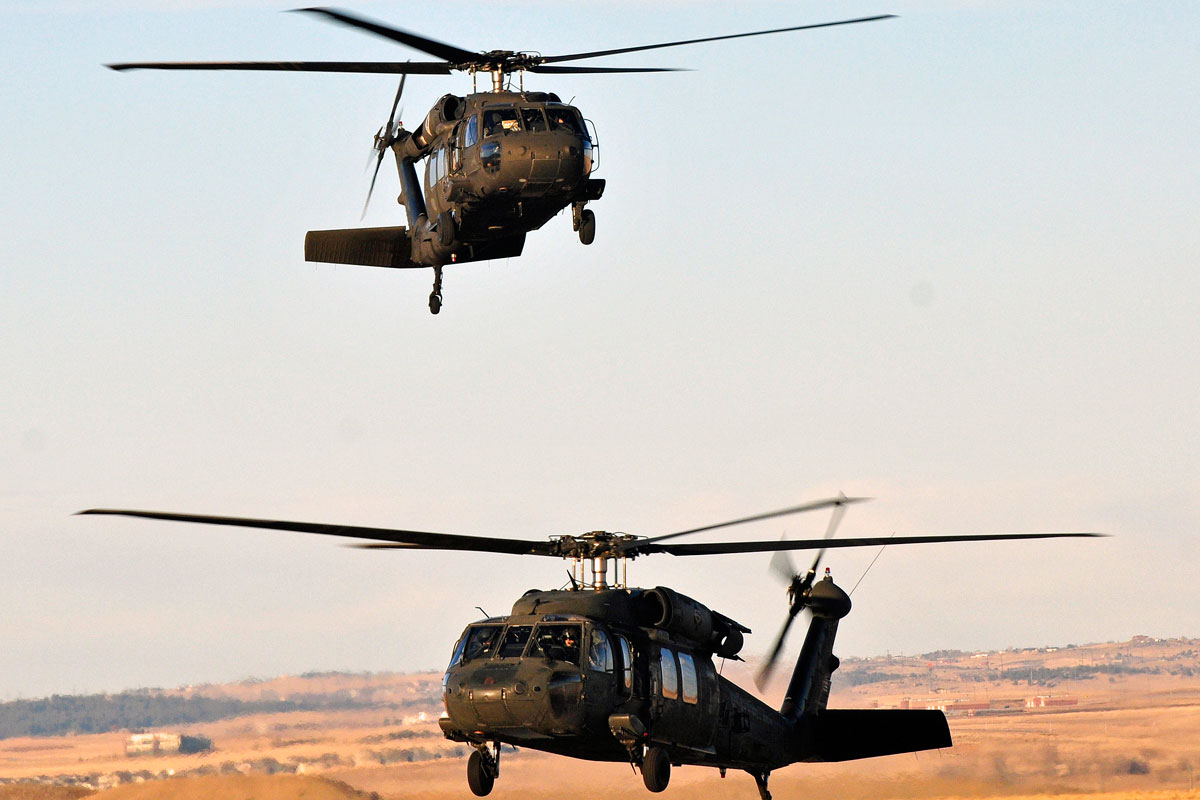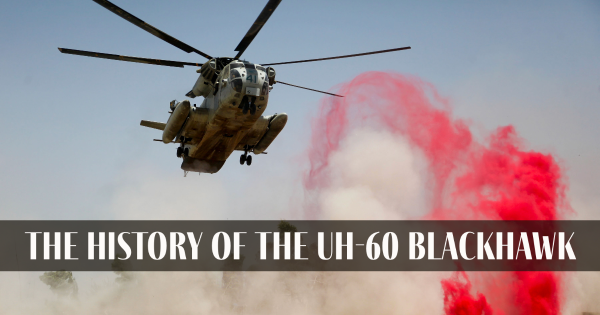Understanding the Mechanics and Design Behind Uh 60 Helicopters
The UH-60 helicopter, typically recognized as the Black Hawk, stands as a pinnacle of contemporary rotorcraft innovation, personifying a blend of durable design and intricate auto mechanics. From its beginning to its present models, the evolution of this aircraft showcases a combination of innovation and functionality. As we peel off back the layers of the UH-60's design, a globe of detailed systems and meticulous design comes to light. Recognizing the technicians and engineering behind this versatile aircraft introduces a realm where precision satisfies power, and where each part plays a vital duty in accomplishing trip.
History of UH-60 Helicopters
The background of UH-60 helicopters traces back to the late 1970s when the USA Military sought a flexible and advanced utility helicopter to replace its aging fleet. In action to this requirement, the Sikorsky Aircraft Corporation created the UH-60 Black Hawk helicopter. Presented in 1979, the UH-60 rapidly became a staple in military operations as a result of its remarkable abilities.
The UH-60 was developed to excel in a selection of goals, including army transportation, medical discharge, digital warfare, and special procedures. Its ability to adjust to various functions made it a useful asset to the united state Army and other army forces worldwide
Over the years, the UH-60 system has undergone a number of upgrades and variations to enhance its efficiency and keep pace with evolving goal needs. These helicopters have actually seen substantial solution in disputes such as the Gulf War, Afghanistan, and Iraq, showcasing their dependability and convenience in varied functional atmospheres. The UH-60's rich history is a testament to its long-lasting tradition as a top utility helicopter.

Engine and Power Systems
Utilizing advanced propulsion innovation, UH-60 helicopters are geared up with innovative engine and power systems to make certain optimum efficiency and dependability in a variety of operational situations. The UH-60, frequently known as the Black Hawk, is powered by 2 General Electric T700-GE-701D engines, each with the ability of providing up to 1,940 shaft horse power. These turboshaft engines give the needed thrust for the helicopter to execute its goals properly, consisting of army transportation, medical emptying, and battle assistance.

Blades System and Aerodynamics
How do the blades system and aerodynamics of UH-60 helicopters add to their operational effectiveness and trip abilities? The rotor system of the UH-60 helicopter plays a vital duty in giving lift and propulsion. The UH-60 includes a four-bladed, totally expressed blades system that enables high ability to move and security during flight. This design makes it possible for the helicopter to execute a variety of objectives, from transportation and clinical discharge to battle procedures.
Aerodynamics additionally play a crucial function in the performance of UH-60 helicopters. The structured body and blades blade style decrease you can look here drag, allowing the helicopter to attain higher rates and better gas performance. The wind resistant layout of the UH-60 also adds to its capability to run in varied environmental problems, consisting of high altitudes and warm temperatures.
Avionics and Flight Control Equipment

In its detailed coordination with the rotor system and the rules of aerodynamics of UH-60 helicopters, the avionics and flight control systems form a critical network of technologies shaping the airplane's functional capacities. In the UH-60, these systems consist of digital display screens, interaction radios, General practitioner navigating, climate radar, and auto-pilot systems.
The flight control systems of the UH-60 are in charge of converting the pilot's inputs right into the suitable changes to the blades system, guaranteeing steady flight and maneuverability. These web link systems include hydraulic actuators, servos, and computers that interact to manage the primary and tail blades, in addition to other flight control surfaces. By exactly handling the helicopter's flight characteristics, these systems make it possible for pilots to carry out a wide variety of objectives, from transport and search-and-rescue to combat operations, with precision and self-confidence.
Duty and Applications in Air Travel
The duty and applications of avionics and trip control systems in air travel are indispensable to making certain the secure and effective operation of aircraft, consisting of why not try here UH-60 helicopters. Avionics systems in UH-60 helicopters incorporate a series of electronic systems that aid in navigation, interaction, surveillance, and managing different aircraft functions. These systems consist of electronic screens, autopilot systems, interaction radios, general practitioner navigation equipment, and weather radar. Trip control systems play a crucial role in maneuvering the helicopter in the air, keeping stability, and guaranteeing precise activities. The fly-by-wire innovation utilized in modern UH-60 helicopters converts pilot inputs into digital signals, which are then analyzed by the flight control computer systems to change the aircraft's control surface areas. Furthermore, these systems integrate safety attributes such as autopilot settings, terrain recognition cautioning systems, and security augmentation systems to enhance the general safety and functional abilities of the UH-60 helicopters in different missions, including army transport, clinical emptying, search and rescue, and aerial firefighting.
Conclusion
Finally, the UH-60 helicopter is a flexible aircraft with an abundant background and progressed design. Its engine and power systems, rotor system, aerodynamics, avionics, and trip control systems all interact to make it a reliable and effective machine. The UH-60's role and applications in air travel are substantial, varying from army operations to search and rescue goals. Its continued development and use demonstrate its value in the area of air travel (uh 60).
In its detailed control with the rotor system and aerodynamics of UH-60 helicopters, the avionics and flight control systems develop a critical network of technologies forming the airplane's operational capabilities.The flight control systems of the UH-60 are liable for converting the pilot's inputs right into the proper modifications to the rotor system, ensuring secure flight and ability to move. Avionics systems in UH-60 helicopters incorporate an array of digital systems that aid in navigation, interaction, surveillance, and regulating different aircraft features. Furthermore, these systems incorporate safety and security attributes such as auto-pilot modes, surface understanding cautioning systems, and security augmentation systems to enhance the total security and operational capacities of the UH-60 helicopters in different missions, including troop transportation, medical discharge, search and rescue, and airborne firefighting.
Its engine and power systems, rotor system, the rules of aerodynamics, avionics, and flight control systems all work with each other to make it a trustworthy and effective machine.